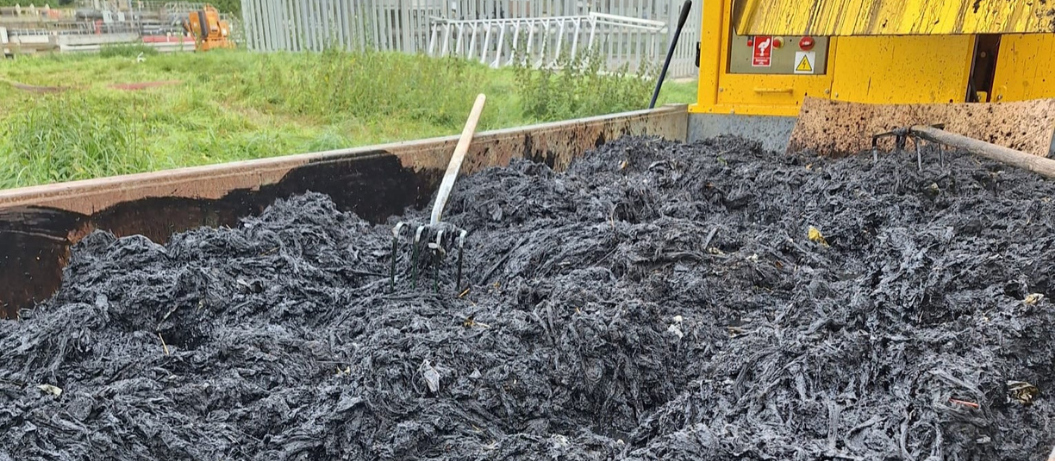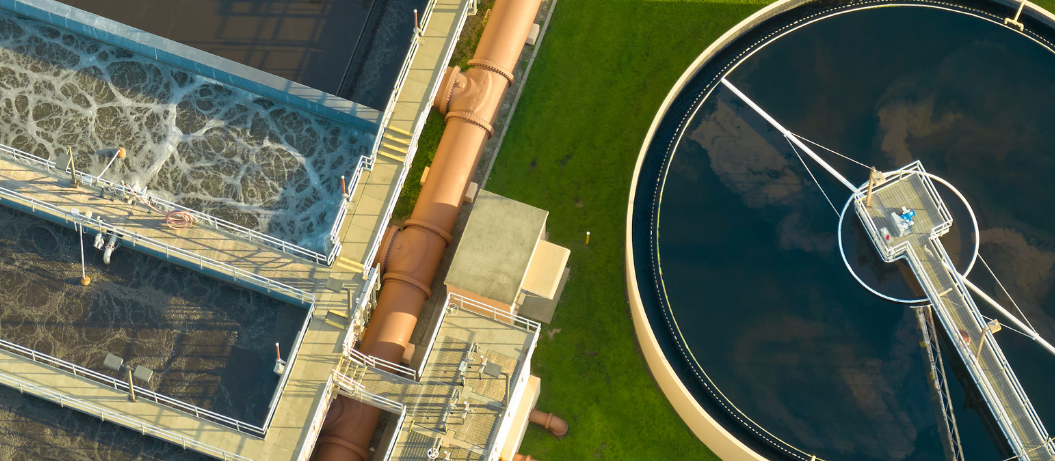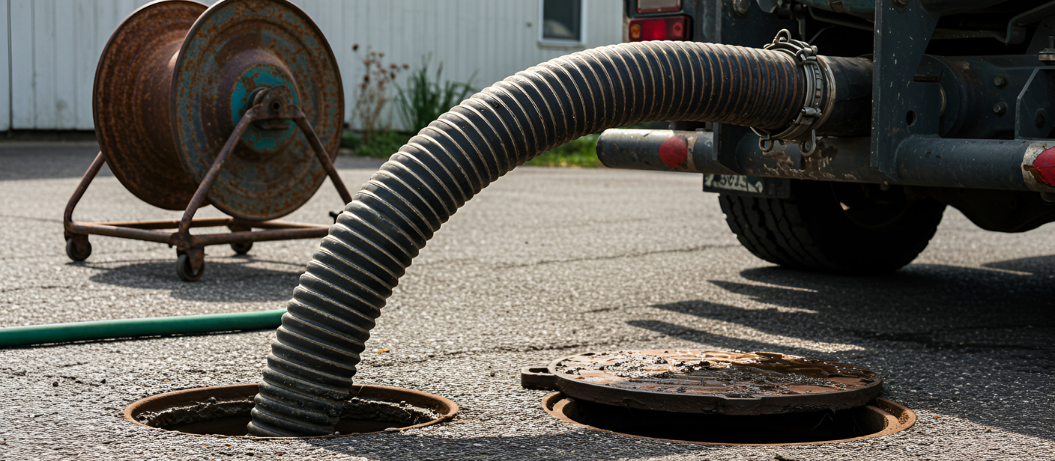Industrial water pumps are the unsung heroes of numerous processes in water utility management, from feeding process water to managing public wastewater and sewage. Each pump is a specialised asset, designed to tackle specific tasks and challenges, such as moving high volumes of water, handling abrasive sludges, or accurately dosing chemicals. Understanding the right pump for the job is, therefore, essential for optimising performance and reducing costs. In this article, we examine the main types of industrial water pumps and their primary applications.
1. Centrifugal pumps
Centrifugal pumps are the most commonly used pumps in water treatment settings. They convert rotational kinetic energy, typically from an electric motor, into fluid flow. The result is a high flow rate that is ideal for quickly and efficiently moving large volumes of fluid through a system. Centrifugal pumps are most effective with low-viscosity fluids, such as clear water, although centrifugal slurry pumps are also available. and are often chosen for their reliability, consistent output, and simplicity.
Applications:
- Water supplies – maintaining consistent flow in public and industrial/commercial water treatment systems.
- Irrigation – delivering high volumes of water for agricultural use.
- Sewage treatment – managing the flow of wastewater and slurry through treatment facilities.
- Drainage and dewatering – removing excess water from flooded areas and construction sites.
Examples
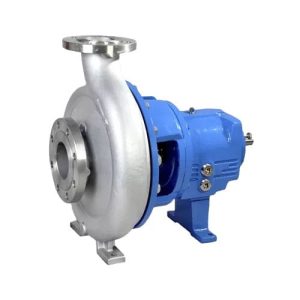
Figure 1 Toro ANSI clear water pump

Figure 2 Heavy-duty SlurryPro centrifugal pump
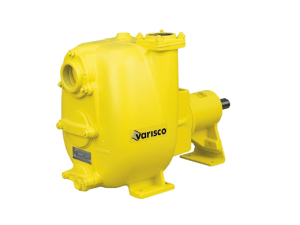
Figure 3 Self-priming centrifugal pump
2. Positive displacement pumps
Positive displacement pumps work by trapping a fixed volume of liquid and forcing it through the pump’s discharge pipe. This delivers a consistent flow rate, regardless of any changes in discharge pressure, making them ideal for precision dosing tasks and those that require consistent performance and accuracy under varying pressures.
Applications:
- Dosing and metering – for when exact quantities of fluid need to be delivered.
- Transferring viscous liquids – such as heavy slurries.
- High-pressure systems – e.g. hydraulic systems, pressure washers, and filter presses.
Examples
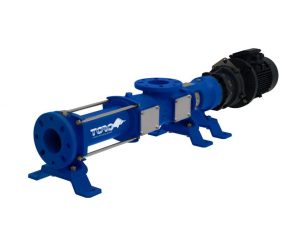
Figure 4 Progressive Cavity Pump
3. Submersible pump
A submersible pump is fully submerged in the fluid it is pumping. A sealed motor integrated into the pump’s body prevents issues such as cavitation and provides enhanced cooling, thereby boosting the pump’s durability. Submersible pumps are highly efficient in tough environments such as flooded areas and construction sites, and are capable of handling fluids with high volumes of suspended particles and debris.
Applications:
- Site dewatering – removing water from construction sites and other locations prior to building development.
- Wastewater management – pumping out sewage and dirty water as part of a water treatment process.
- Flood control – submersible pumps are capable of rapidly draining floodwater from fields and urban areas, even in the presence of suspended solids.
Examples
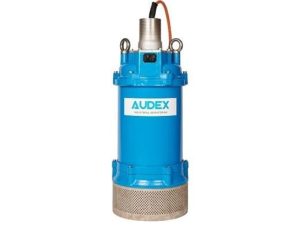
Figure 5 Industrial submersible pump
4. Peristaltic pumps
Peristaltic pumps are a type of positive displacement pump that uses rollers to compress a flexible tube, which pushes the fluid through it. The fluid only comes into contact with the tube’s interior, making these pumps perfect for handling sensitive liquids. Peristaltic pumps are capable of gently handling abrasive and corrosive materials, making them the asset of choice for many chemical applications or industrial dosing operations. Peristaltic pumps are also used where fluid contamination must be avoided.
Applications:
- Abrasive fluids – these types of water pumps are suitable for handling liquids mixed with hard particles, such as industrial slurries that may include aggregates or high volumes of silica.
- Corrosive chemicals – ideal for fluids that could damage other pump types.
- Industrial dosing – peristaltic pumps facilitate precision dosing for chemical additions in water treatment processes.
Examples
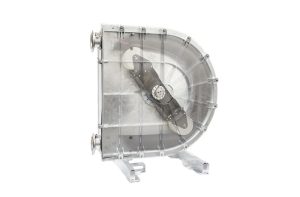
Figure 6 Industrial peristaltic pump front and rear
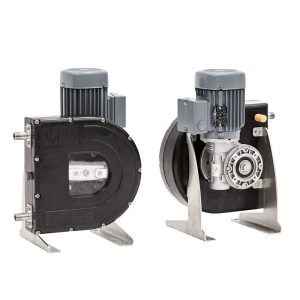
5. Diaphragm pumps
Also known as membrane or Air-Operated Double Diaphragm (AODD) pumps, these pumps use a reciprocating diaphragm to create pressure, allowing fluids to move efficiently through the system. Diaphragm pumps are extremely versatile, capable of handling everything from water-thin fluids to highly viscous and abrasive substances. Their robust design makes them perfect for demanding applications.
Applications:
- Chemical transfer – e.g. handling aggressive or reactive chemicals.
- Paint and coatings – delivering thick liquid consistently and without contamination in industrial production lines.
- General fluid transfer – managing liquids with varying viscosities and levels of abrasiveness.

Figure 7 air-operated Diaphragm pump
6. Gear pumps
Gear pumps transfer fluids via the interaction of two meshing gears, creating a constant flow rate. These positive displacement pumps are known for their ability to handle highly viscous fluids. Many water treatment facilities favour gear pumps for their durability and efficient handling of thick, sticky fluids, particularly in high-demand settings.
Applications:
- Fuel oil transfer – moving oils and highly viscous fluids in industrial and marine environments
- Lubrication systems – maintaining a constant fluid flow for machinery lubrication
- Chemical transfers – handling viscous chemicals safely and effectively
7. Screw pumps
Screw pumps use one or more rotating screws to move fluids along an axis within sealed cavities. This design ensures smooth, non-pulsating flow, even with highly viscous and solid-containing materials. Screw pumps are unmatched in their ability to move difficult materials, making them a staple in wastewater treatment plants and similar industries.
Applications:
- Wastewater treatment – transferring sludge and handling solids-laden fluids efficiently.
- Slurry transfer – managing thick mixtures of liquids and solids in industrial processes.
- Challenging media – handling highly viscous or abrasive substances quickly and reliably.
Find out more
For detailed insight on choosing the best pumps for handling dirty water in industrial and water treatment applications, please download our free Guide to Dirty Water Pumps. You can also learn more about how different types of water pumps can meet your operational needs by visiting our dedicated resources page here: Water Industry Pumps.

We also take a sustainable approach to our work and are committed to reducing energy waste from pumps. Our expert knowledge allows us to reduce energy usage by 20% on the average site!
Call us today on 0808 196 5108 for more information.
 October 29 2025
October 29 2025 5 min read
5 min read
